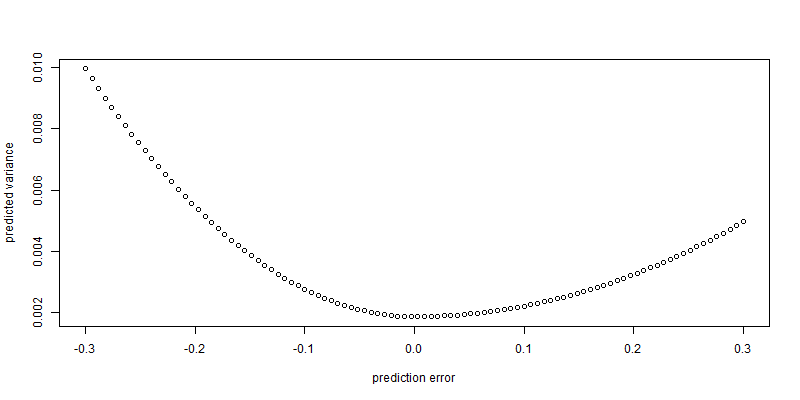Leverage effect
GARCH Models in R

Kris Boudt
Professor of finance and econometrics
Negative returns induce higher leverage
- $R_t <0 $
- $\downarrow$ market value
- $\uparrow$ leverage = debt / market value
- $\uparrow$ volatility
Two equations
Use separate equations for the variance following negative and positive unexpected return $e_t = R_t - \mu_t$ :
Case when $ e_{t-1} \gt 0$
$$ \sigma^2_{t} = ??? $$
Case when $ e_{t-1} \le 0$
$$ \sigma^2_{t} = ??? $$
In case of a positive surprise
... we take the usual GARCH(1,1) equation:
Case when $ e_{t-1} \gt 0$
$$ \sigma^2_{t} = \omega + \alpha e^{2}_{t-1} + \beta \sigma^{2}_{t-1} $$
Case when $ e_{t-1} \le 0$
$$ \sigma^2_{t} = ??? $$
In case of a negative surprise
The predicted variance should be higher than after a positive surprise.
This means a higher coefficient multiplying the squared prediction error, namely $\alpha+\gamma$ instead of $\alpha$ with $\gamma \geq 0$
Case when $ e_{t-1} \gt 0$
$$ \sigma^2_{t} = \omega + \alpha e^{2}_{t-1} + \beta \sigma^{2}_{t-1} $$
Case when $ e_{t-1} \le 0$
$$ \sigma^2_{t} = \omega + (\alpha + \gamma) e^{2}_{t-1} + \beta \sigma^{2}_{t-1} $$
This is the GJR model proposed Glosten, Jagannathan and Runkle.
How?
Change the argument variance.model of ugarchspec() from model = "sGARCH" to model = "gjrGARCH":
garchspec <- ugarchspec(mean.model = list(armaOrder = c(0, 0)),
variance.model = list(model = "sGARCH"),
distribution.model = "sstd")
$$\downarrow$$
garchspec <- ugarchspec(mean.model = list(armaOrder = c(0, 0)),
variance.model = list(model = "gjrGARCH"),
distribution.model = "sstd")
Illustration on MSFT returns
Estimate the model
garchfit <- ugarchfit(data = msftret, spec = garchspec)
Inspect the GARCH coefficients
coef(garchfit)[2:5]
omega alpha1 beta1 gamma1
2.007875e-06 3.423336e-02 9.363302e-01 5.531854e-02

Visualize volatility response using newsimpact()
out <- newsimpact(garchfit)
plot(out$zx, out$zy, xlab = "prediction error", ylab = "predicted variance")

Let's estimate a GJR GARCH model.
GARCH Models in R

